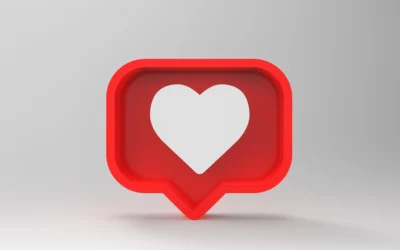Social media graphics are visual images created specifically to share on social media platforms, designed to capture attention and communicate messages quickly. For content creators, mastering the basics of social media graphics is essential to stand out in a crowded digital space.
Read below as we explore the purpose behind these visuals, share practical design and posting tips, and introduce you to powerful tools that make creating captivating content easier.

The Purpose of Social Media Graphics
Social media graphics help grab people’s attention quickly in a world full of fast-scrolling feeds.
According to a study by Venngage, marketers say that original graphics, like infographics and illustrations, work the best.1
This means when you add pictures or designs to your posts, people are much more likely to stop, look, and interact with your content by liking, commenting, or sharing it.
So, if you share a simple quote as plain text, many might scroll past without noticing. But if you turn that quote into a colorful graphic with bold fonts and eye-catching colors, it becomes more appealing and easier to remember. Brands use this strategy all the time to make announcements, share tips, or highlight products.
Graphics also help explain ideas quickly. Instead of writing a long message, a well-designed infographic or chart can show the same information in a way people understand faster. This saves time for viewers and increases the chances they will engage with your post.
Key Design and Posting Tips for Effective Graphics
Here are important principles to keep in mind:
1. A Central Hub Keeps Your Design Process on Track
A part of Canva’s design process starts by creating one main document where all your design information lives. This “single source of truth” keeps everything your team needs in one place, like design rules, brand guides, logos, and project files.
Having this shared hub helps everyone stay on the same page. If someone on the marketing team spots missing details in a design brief, they can improve upon it quickly without slowing down the designer. This improves teamwork and communication.
Create an easy-to-use “table of contents” with links to key files. Share it with your team and update it often to keep it useful.
2. Don’t Overcrowd Your Graphic With Too Many Words or Images
A clean, simple design helps people understand your message quickly. Just like in a conversation, you shouldn’t try to say too much at once; focus on one main point per image.
For example, a short quote on a plain background with a bold font is often enough to catch attention. Many popular Instagram pages use this style with lots of white space and one clear message. These posts are easy to read, easy to share, and often get the most likes.
So next time you design something, ask yourself: “Can someone understand this in 3 seconds?” If the answer is yes, you’re on the right track.
3. Choose Fonts That Are Easy to Read
Most people scroll through social media quickly, so your message needs to be clear at a glance. That’s why you should stay away from fancy or curly fonts that might look pretty but make your words confusing or messy, especially when the font size is small.
Instead, go with clean, simple fonts that are easy on the eyes. Fonts like Arial, Helvetica, Open Sans, or Montserrat are popular because they are neat, modern, and very readable. These fonts look good on all devices and help your message come across clearly and professionally.
You’ll notice how big brands post on Instagram or Facebook. They often use bold, simple text for quotes, sales announcements, or product names.
4. Use Colors That Catch the Eye but Also Fit Your Brand
Bright colors such as red, orange, or yellow can grab attention and make people stop scrolling. These colors are great for highlighting important parts of your graphic, like a sale, a call-to-action, or a special announcement.
If the colors blend, your message can get lost. Use strong contrast, like dark text on a light background or the other way around, for better clarity.
Facebook uses blue and white because these colors are easy on the eyes and create a calm, trustworthy feeling. Red, on the other hand, is often used by brands like Coca-Cola or YouTube to show excitement or energy.
5. Always Use Sharp, Clear Pictures or Graphics
Blurry or low-quality images can make your post look messy or rushed, and people are less likely to stop and engage with it.
When scrolling through social media, bright, clear visuals usually stand out. If you’re a food blogger, a sharp photo showing the meal’s color and texture can grab attention and spark engagement. A dark or blurry image won’t have the same effect.
Good visuals also help you tell a story. Whether you’re sharing a product, a quote, or a moment from your day, using high-quality images shows your audience that you care about your content, and that makes them more likely to care, too.
6. Make the Design Fit the Platform
Different social media sites have different image sizes and styles that work best, so it’s important to design your graphics to match each platform.
For example, Instagram is known for its square images, especially in the main feed. A 1:1 ratio (like 1080 x 1080 pixels) looks clean and fits well without getting cropped. On the other hand, Facebook and Twitter (now X) often display wider images.
A rectangular size, like 1200 x 628 pixels, is better for those platforms because it takes up more horizontal space and catches people’s attention as they scroll.
So, before you post, think about where your graphic is going. A little planning can make sure your content looks polished, professional, and gets the attention it deserves.
| Head over to our Social Media guides to find helpful tips and ideas on growing your brand and getting more attention online! |
Tools for Creating Captivating Graphics
To make eye-catching social media graphics, using the right tools can help you save time and create professional designs even if you’re not a designer.
Here are five popular tools you can try, each with examples of how they’re used:
1. Canva
Canva is a super popular and easy-to-use tool that lets you create graphics with drag-and-drop features. You can pick from thousands of templates for Instagram posts, Facebook banners, stories, and more.
For example, a small business owner can quickly make a promotional poster by adding photos, text, and logos without needing design skills.
2. Adobe Illustrator
This is a powerful tool used by professional designers. Illustrator lets you create detailed and custom graphics, like logos or vector illustrations.
If you want total control over shapes and colors, this is the tool for you. It’s great for making unique designs that stand out.
3. Piktochart
Piktochart is great for making infographics and presentations. If you want to share data or tips visually, Piktochart helps turn numbers into colorful charts and graphics.
Bloggers showing healthy habits or travel tips can use it to make visually appealing infographics.
4. Snappa
Snappa offers easy templates and high-quality stock photos for social media, ads, and blogs. It’s helpful if you want to create sharp visuals fast.
Let’s say, a marketer might use Snappa to design a Facebook ad image with bold text and a strong call-to-action.
5. AI Image Generation Tools
Besides classic design software, AI image generation tools are becoming popular for creating unique and creative graphics quickly. AI tools like Midjourney and Stable Diffusion create images from simple text descriptions.
These AI tools help make high-quality backgrounds, characters, or abstract art, perfect for adding a new touch to your social media graphics.
Creating great social media graphics doesn’t have to be complicated. With practice and the right resources, you’ll be able to create captivating content that connects with your audience and helps your message stand out.
If you want to boost your social media presence and create show-stopping graphics, then click below to get started:

Source:
- Khoja, N. (2018, November 15). 14 Visual Content Marketing Statistics to Know for 2019 [Infographic]. Venngage. https://venngage.com/blog/visual-content-marketing-statistics/




0 Comments